Brioni, Brad and the big rebrand
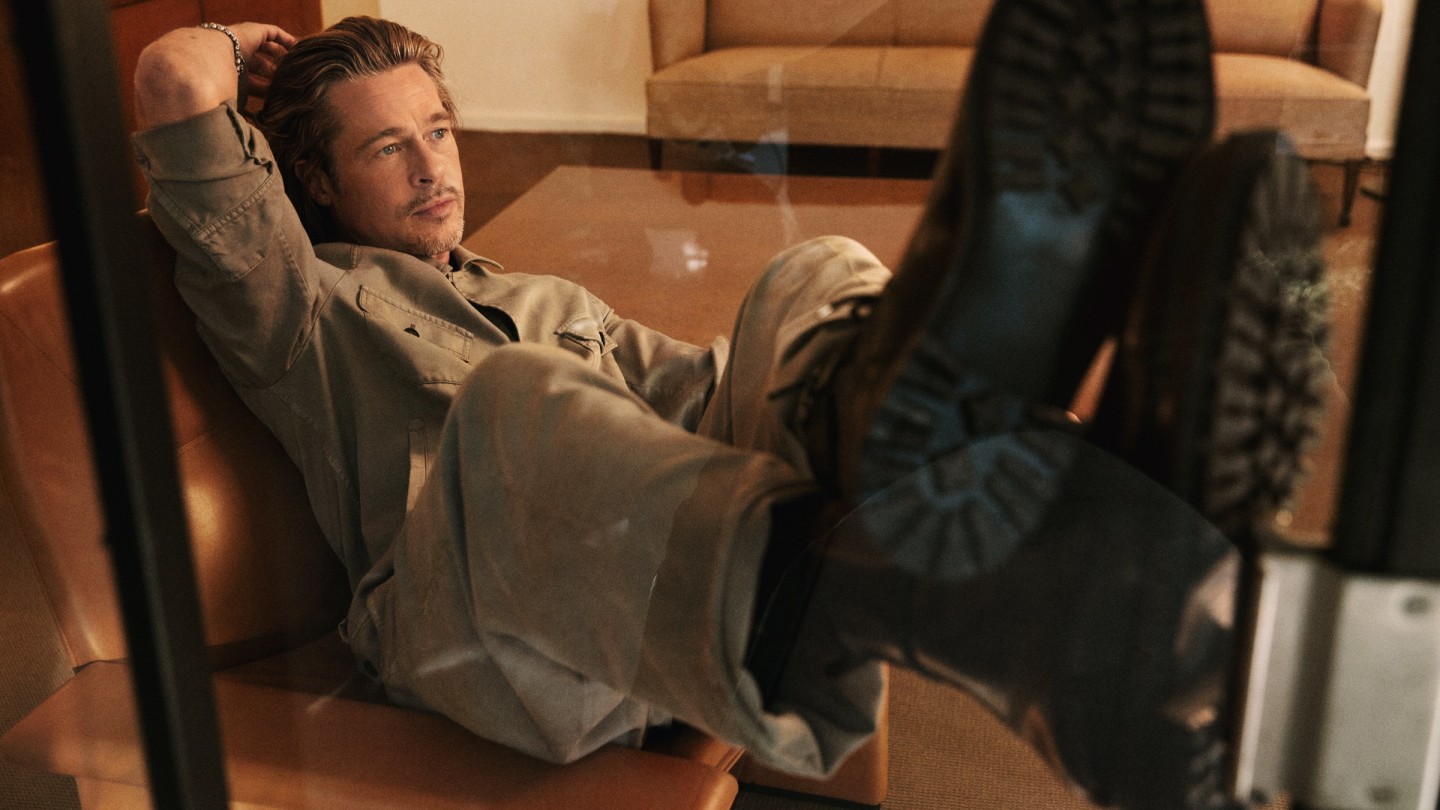
Simply sign up to the Style myFT Digest -- delivered directly to your inbox.
Last year, shortly before all social gatherings were put on hold, Brad Pitt was photographed in New York on his way to an awards ceremony at TAO Downtown. He was dressed entirely in grey, wearing a two-piece suit and matching overcoat and a polo shirt, louchely unbuttoned in lieu of a shirt and tie. Made by Brioni, the look epitomised a resolutely modern way of dressing, the perfect expression of the brand’s reinvention following a rocky few years. “We’ve made some great progress,” says Norbert Stumpfl, Brioni’s design director, from the house’s headquarters in Rome. “When I joined, I really wanted to instil a feeling in the design team that we are allowed to innovate here.”
Prior to Stumpfl’s arrival, Brioni had been through a rough patch. In 2016, the Kering Group appointed former Mytheresa fashion director Justin O’Shea as creative director, who joined the house with no formal training in tailoring and lots of flashy ideas about how to appeal to a younger generation. Out went the traditional values so closely associated with Brioni, and in came skinny-cut trousers, full-length chinchilla coats and an ad campaign fronted by Metallica.
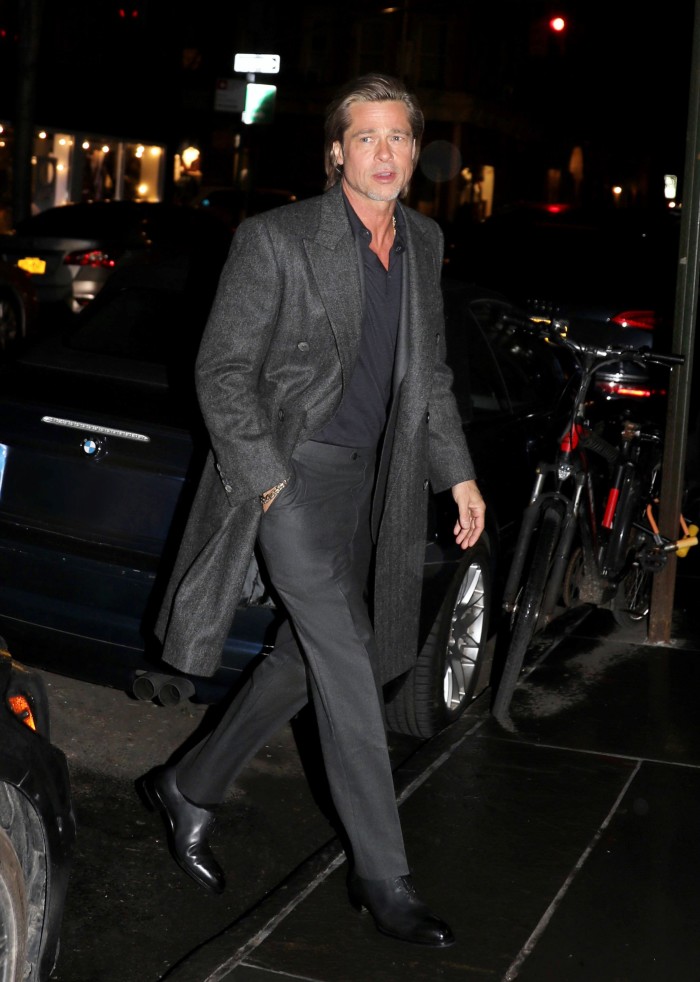
Such a dramatic break with the label’s history alienated some Brioni customers. While Kering doesn’t release specific numbers about Brioni, which is categorised under “other brands”, a financial report remarked that the house had made a “negative contribution” to the group’s overall performance, and market analysts reported that it was not performing well. O’Shea was replaced after six months by Nina-Maria Nitsche, whose work was far more elegant, but perhaps a little safe. She, in turn, designed only two seasons with Brioni. Stumpfl’s appointment was the third roll of the dice in three years.
The Austrian designer is a reassuring character. Gentle and softly spoken, with a French tinge to his accent, he lived in Paris for 15 years, working in the design teams at Lanvin, Balenciaga, Louis Vuitton and Berluti before relocating to Rome to head up Brioni in late 2018. He was joined in January 2020 by Mehdi Benabadji, the brand’s new CEO. According to Benabadji, the duo are still in the early stages of “writing a new chapter”. But central to their ambition has been a reassessment of what makes a 76-year-old Italian tailoring house relevant now.
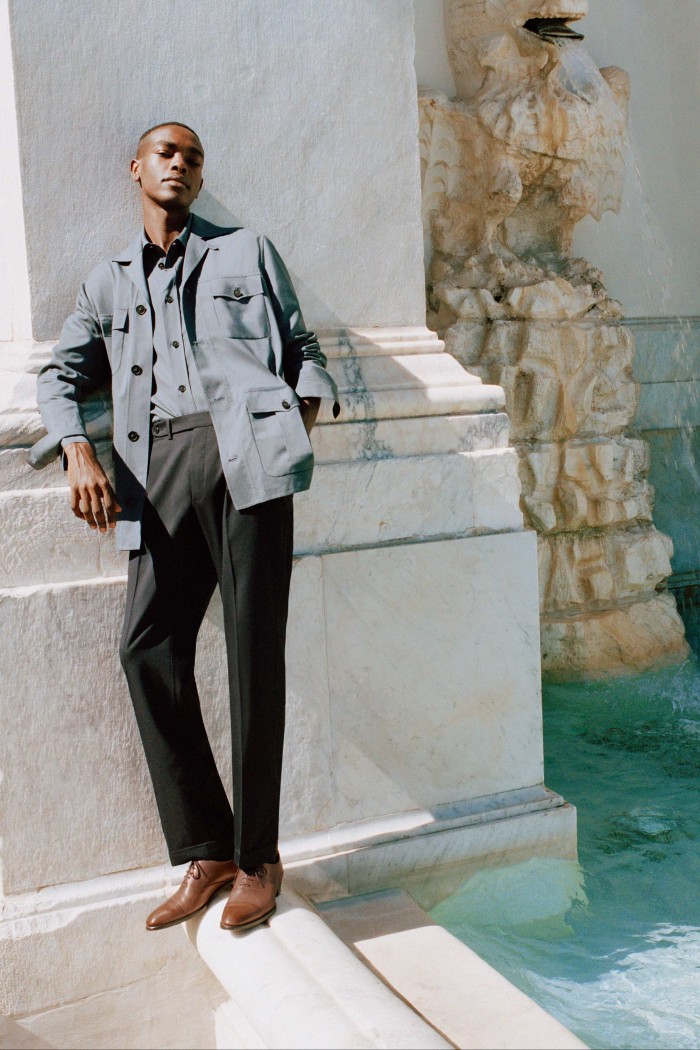
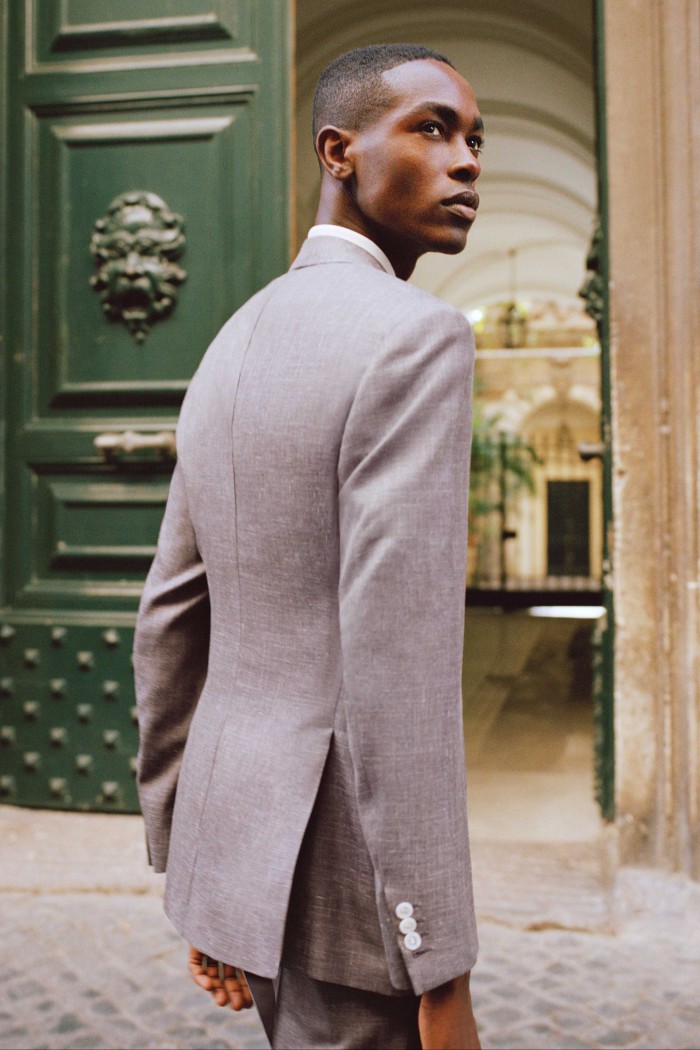
When asked what he thinks of Brioni as a heritage institution, Benabadji’s answer reveals an acute understanding of the problems faced by many “formal” brands, negotiating a tightrope walk between serving traditional tailoring to a stalwart but ageing clientele while also trying to make adaptations for the younger customer who has a more casual attitude to clothes. “I’m not a great fan of the terminology ‘heritage brand’ – it can be misleading,” says Benabadji. “It’s very much associated with always doing the same thing and repeating the old. Sartorial excellence runs deep in our DNA, but Brioni was born in 1945 with a spirit of innovation.”
Certainly, Brioni is a pioneer. The house was the first in history to stage a men’s catwalk show in 1952. In 1955, founders Nazareno Fonticoli and Gaetano Savini popularised the idea of a trunk show, with their tailors touring right across the United States to take orders. In 1958, the house staged a fashion show mid-flight on a plane travelling from Rome to New York. The brand was innovative also in forging early relationships with Hollywood and recognising the power of celebrity, dressing Clark Gable and John Wayne in the ’50s, and later Pierce Brosnan, long before the culture of the influencer took hold. For an old-school tailor, Brioni is no stick-in-the-mud.
The challenge for both Benabadji and Stumpfl is to translate this history of innovation into the idea of modern luxury. “The most important thing we’ve learned this past year is that we need to accelerate,” says Benabadji. “We need to keep digitising, and we need to strike the right balance between reaching a wider audience and being a connoisseur’s brand.”
Product is the most obvious starting point. Stumpfl’s collections are a harmonious meeting of tailored and casual designs; old-school glamour with modern wearability. “I want the Brioni man to come into store and leave with a wardrobe that works for the 21st century – this isn’t the 1950s,” he says.
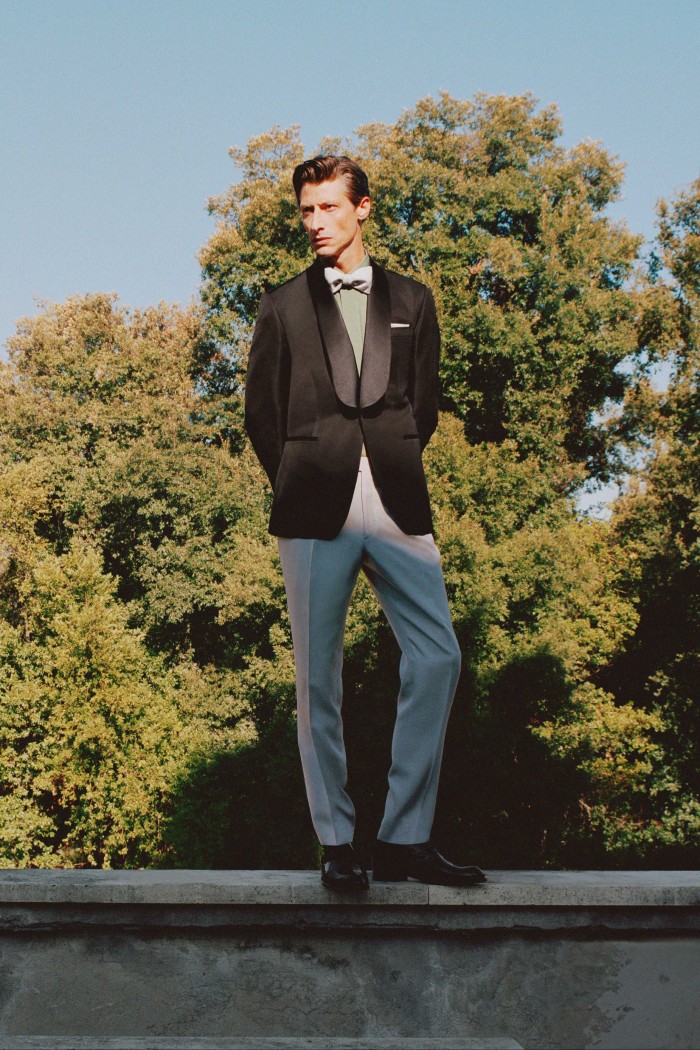
Brioni has also introduced a “virtual” trunk-show programme, whereby customers can order bespoke suits over video calls anywhere in the world. Over the course of 2021, there’s also a new store concept rolling out worldwide, with a chic, townhouse-like feel, inspired by an imagined lifestyle of a Roman man living abroad.
But to solve Benabadji’s “awareness” challenge, the house is relying on a tried-and-true tactic: celebrity endorsement. Brad Pitt was enlisted as a brand ambassador in line with Stumpfl’s first collection (at the end of 2019), and has since appeared in advertising campaigns and on red carpets in the house’s sharp tuxedos. In April, this partnership will be further cemented with a capsule developed in a collaboration between Pitt and Stumpfl.
“It’s made of easy, timeless clothes,” says Stumpfl of the pieces. “Of course, underneath, in terms of fabric research, cut and craftsmanship, there is a lot of dedication to make clothes at this level, but the overall effect is simple and effortless.”
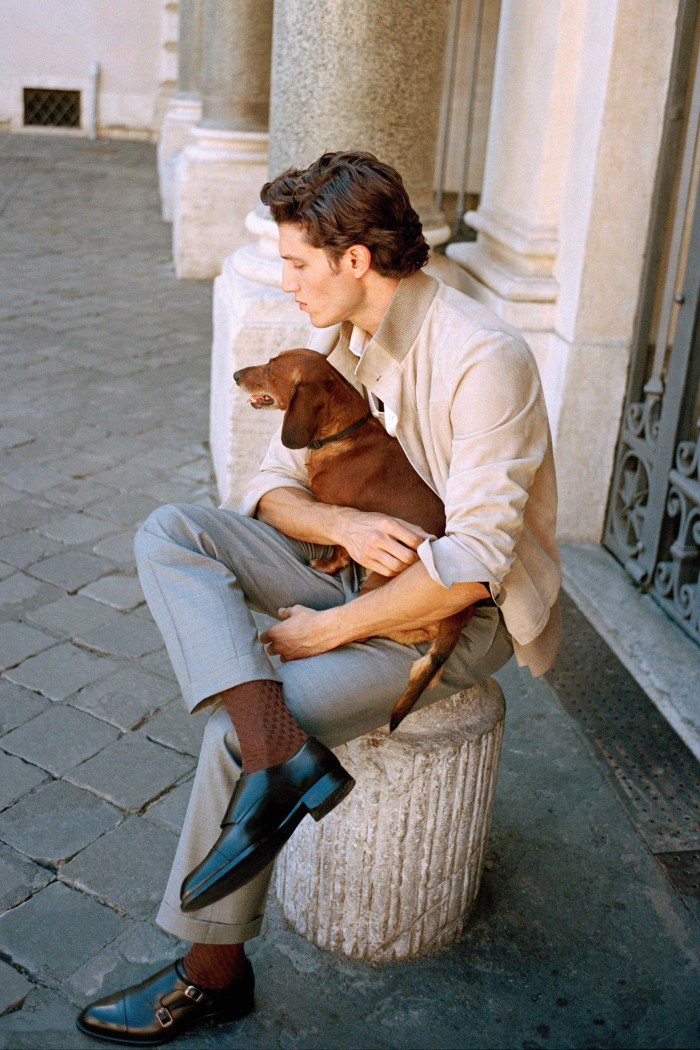
Quite apart from his gargantuan public profile, this association with Pitt feels surprisingly authentic. “It’s great to work with a person who really knows about clothes, art, architecture,” continues Stumpfl. “To me, he is the ideal Brioni customer: creative, successful, has a family. He represents many different facets of modern masculinity. Every man looks up to him, women love him, he’s forward-looking and yet he’s ‘old Hollywood’ too. He lives in his time.”
Anna Ross, a trend forecaster and former editor at WGSN, says Brioni’s partnership with Pitt is a smart move because, while influencer marketing is showing signs of stagnating, A-list endorsements still hold sway. “There’s an enduring elegance to Brad Pitt’s profile that reflects the core values of Brioni,” she says. “Pitt resonates with their customer, yet has a household-name influence that doesn’t reek of ‘in-the-know’ exclusivity. To pair Brioni with the latest TikTok or Instagram star wouldn’t sit right, but Pitt’s profile resonates beyond social-media platforms.” And early signs suggest the new direction is paying off. Mr Porter, one of Brioni’s long-standing and largest online stockists, has seen significant interest in the brand over the past 12 months. “We’re seeing a strong requirement for timeless pieces,” says the retailer’s buying director, Sam Kershaw, “and Brioni is a great example of that, evident by the commercial success we had with an exclusive Brioni collection launched last November. Looking ahead, I predict demand for the house will remain high.”
Benabadji concedes that 2020 was a challenging year for the brand financially, but he’s optimistic about its direction. “Of course, the pandemic hit all brands hard… but Covid-19 has realigned consumer expectations and we’re seeing a growing appreciation for genuine craftsmanship and the skills of people who make garments. Consumers are putting people at the centre of everything.” With its 1,100-strong staff in ateliers in Abruzzo and Lombardia, plus a face like Pitt on board, the brand is set up to cater to this new desire for authenticity.
“That’s why Norbert is the perfect designer for us,” Benabadji says. “He puts the man first in all his creations – there are no ornaments in our clothes and no logo-mania. Everything is about enhancing the personality of our customers.” Adds Stumpfl: “I think that’s what sets us apart from heritage brands, which continue to look backwards. To make Brioni work and keep this brand alive, we can’t do that. The only way forward to us is to keep with the times and create a wardrobe for the modern man.”
Comments